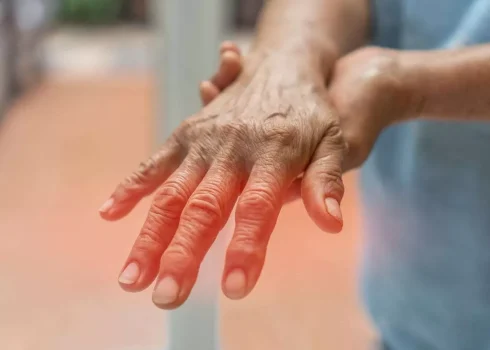
Some recovery houses accept donations of clothing, household goods, and other items for use by residents or to sell to make money to offset the facility’s costs. An example is the Substance Abuse and Mental Health Services Administration (SAMHSA), which offers grants to organizations that provide addiction treatment and recovery services. A sober living house (SLH) is a residence for people recovering from substance use disorder. Sober living homes are meant to be safe, supportive environments that emphasize the importance of building a community and camaraderie with others. Individuals typically enter an SLH after being discharged from a clinical treatment center before returning to their previous home and routine.
Sober Living Homes
Living in a halfway house is generally cheaper than living in a residential rehab because the staff provides fewer services. People who reside in sober living facilities can usually come and go as they please as long as they follow https://ecosoberhouse.com/ certain rules. For example, sober living houses may require residents to be home by a certain time or to go to work during the day. Residents may also be subject to periodic drug testing to demonstrate ongoing sobriety.
How Can I Pay for Sober Living?
This structure creates a sense of discipline and responsibility, essential qualities for a successful recovery journey. Embracing the path of sober living is a transformative step towards reclaiming your life and building a future grounded in health and fulfillment. By choosing to reside in a sober living home, you’re not just finding a place to stay; you’re joining a community committed to mutual support and recovery.
Improvement in Global Health
A sober living house acts as a bridge between residential treatment and returning to daily life. Receiving additional support in the early days post-treatment can significantly enhance the chance of achieving long-term sobriety. This is particularly related to the peer support and solidarity offered at a sober living home where all residents are on the recovery journey together. As the National sober house Institute on Drug Abuse (NIDA) states, peer support programs during and following treatment can help maintain abstinence. Sober living homes provide a safe and drug-free environment for individuals who are committed to maintaining their sobriety. With rules that encourage personal responsibility and a support system that fosters growth, these homes play a crucial role in the recovery process.


People in recovery receive peer support and accountability in a level-one sober living home. Residents may choose to engage in community support groups, counseling, and anything else to help them stay sober. Embracing these benefits, you’ll find that sober living homes offer much more than just a place to stay. They furnish you with the tools, support, and structure needed to build a solid foundation for your recovery journey. Unlike the unpredictable environments you might find outside, these homes establish a routine and rules that foster a safe space for recovery. You’re expected to follow guidelines, which often include curfews, chores, and mandatory participation in recovery meetings.
- The authors found evidence that 12-step program attendance and social support systems were key components of recovery for residents.
- Some homes may also have study areas or partnerships with local colleges that provide counseling and academic support.
- Some SLHs offer intensive outpatient services, including on-site medical care.
- A sober living house acts as a bridge between residential treatment and returning to daily life.
- However, sober living homes differ depending on the residents they accept and the rules they maintain.
These homes can offer an in-between option for individuals after they complete a treatment program and before they return to their homes and lives. This transition can provide continued support while residents learn to apply their newly learned self-reliant skills to real-life situations while they remain drug- or alcohol-free in a community environment. Sober living houses are usually peer-run facilities encouraging continued substance use disorder recovery. Occasionally they are run by a charity or an addiction treatment center as a less structured and more informal version of the inpatient treatment plans they offer.

According to a research study conducted by NCBI, the average stay at a sober living home is between 166 days to 254 days.However, the length of time you stay in a sober living home depends on many factors. These can include your recovery goals, your progress in recovery, the state of your support system, and your financial situation. Most importantly, the decision of how long to stay in a sober living environment should be made in consultation with sober living staff members as well as your family. To convince your son to go to sober living, it’s important to approach the conversation with empathy, understanding, and factual information about the benefits of sober living homes.

A Level I sober living home typically does not have any paid staff and relies on its residents to monitor behavior and enforce policies and procedures. Some sober living facilities provide substance-free transitional housing for only men or only women, meaning men live with men and women live with women. Living with others that are successful, demonstrates to them that it is possible and helps them reach that point. In some cases, your health insurance can help cover the cost of your stay in a sober living home as a necessary addiction recovery service. Financial assistance programs, including grants, scholarships, and public funding, are also available for people recovering from addiction.
However, you can use the table above to get started, and then continue with your own research to find a recovery residence that meets your needs. While Level 2 homes don’t have recovery services onsite, there’s usually a strict requirement for maintaining membership in a recovery group or sticking to an aftercare plan with a counselor. This differs from Level 1 homes which tend to have more relaxed policies on how often drug or alcohol tests are required. Sober living homes are group homes for those recovering from drug or alcohol addiction. Most of these homes are privately owned, although some group homes are owned by businesses and may even be owned by charity organizations. Sober living housing is usually located in quiet areas to help ensure a peaceful environment for individuals in early recovery.
- At Design for Recovery Sober Living, this journey is navigated with utmost care and structured support.
- A sober living house is a transitional residence that offers support, encouragement, and resources to assist you in navigating the challenges you may face in the initial phases of addiction recovery.
- He desperately needed to kick his addiction to alcohol and Valium, and even though he was still young, this felt like his last chance.
- Living among peers who are also committed to a sober lifestyle offers a unique form of support and understanding.
- The main reason an SLH or halfway house exists is to help residents learn to live everyday life without drugs or alcohol.
- This sense of community encourages mutual support, where residents motivate and inspire each other to stay committed to their recovery goals.
- City codes define a family as « a group of individuals, whether or not related, living together in a dwelling unit in a structured relationship constituting an organized housekeeping unit. »
